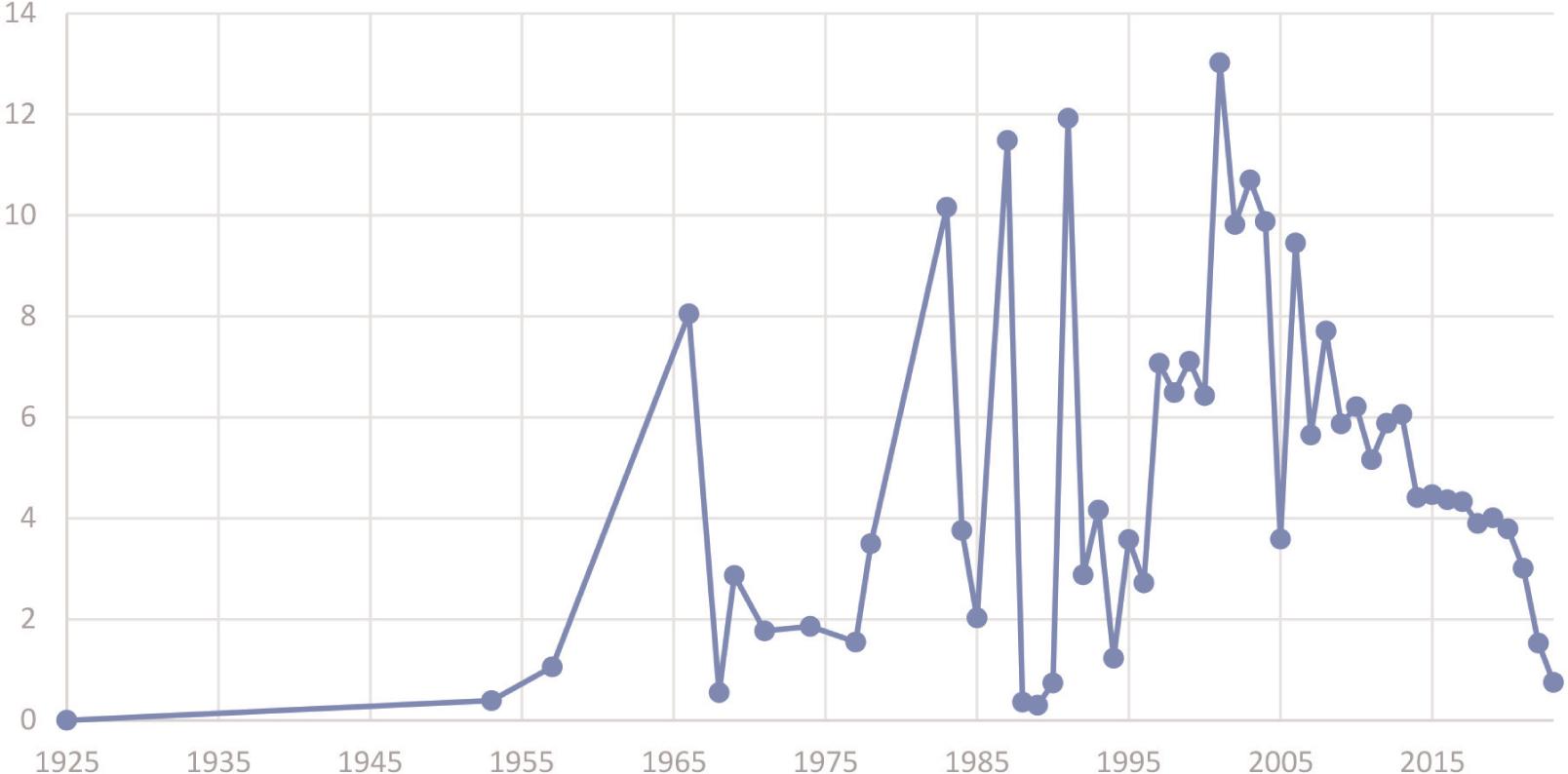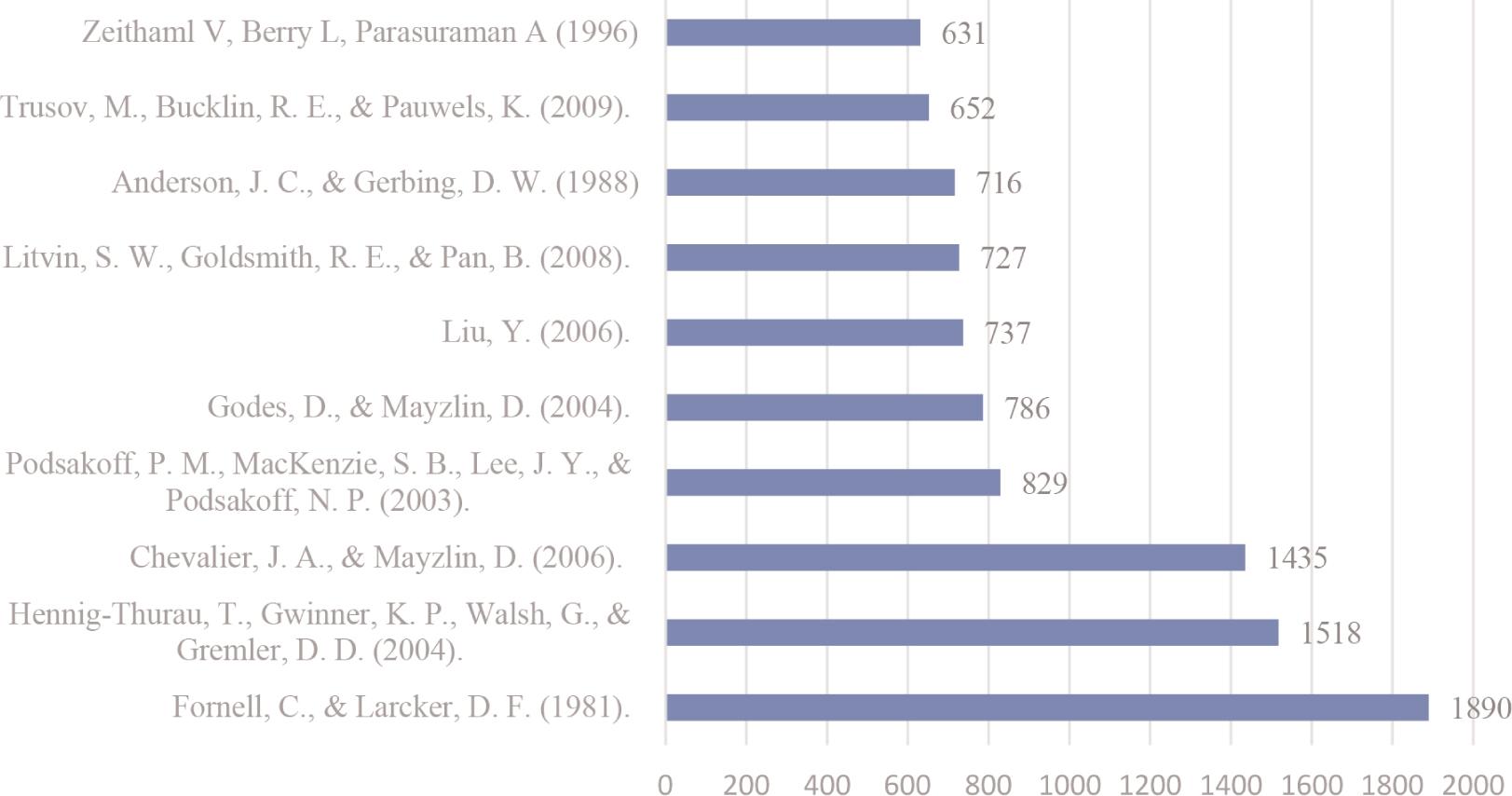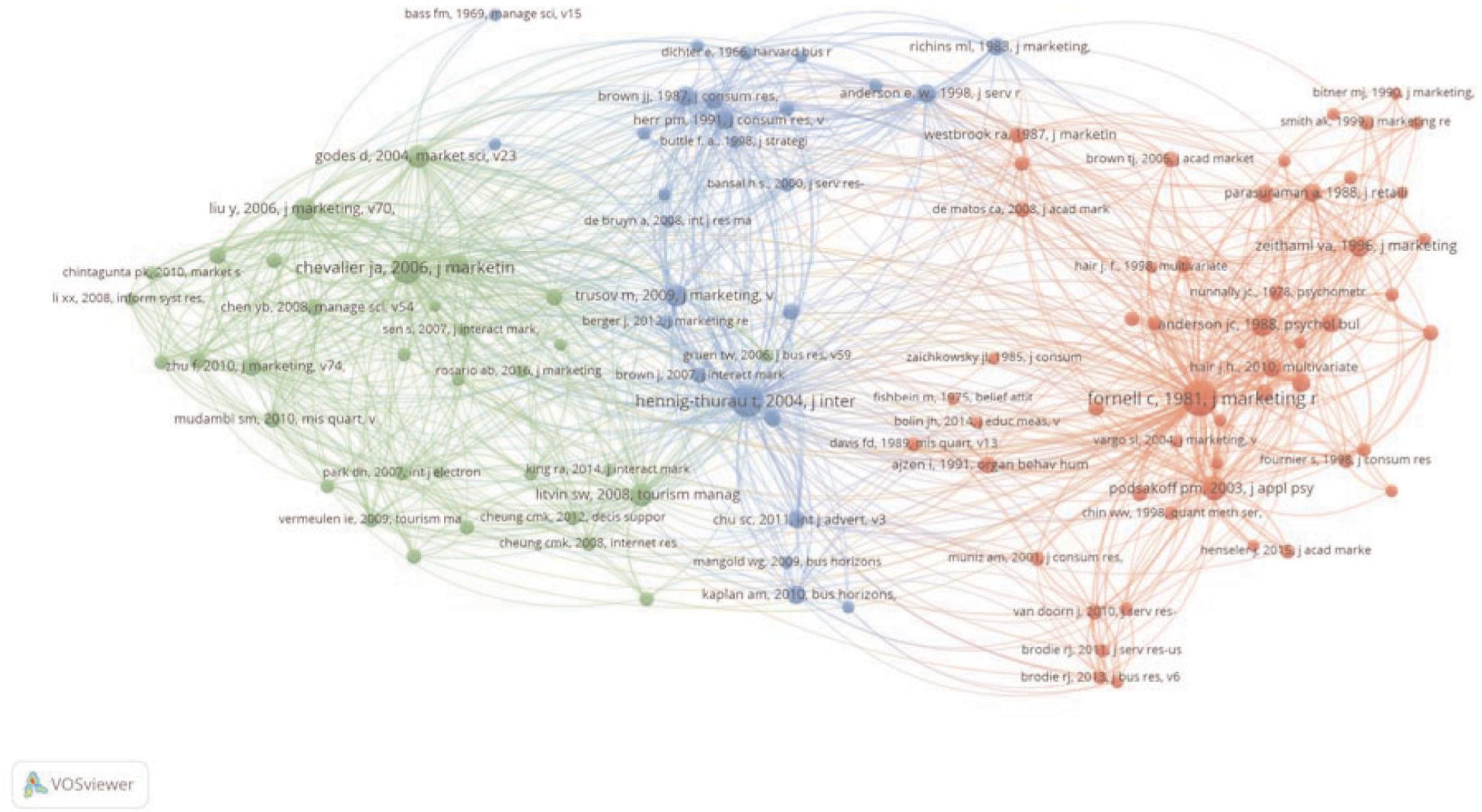Figure 1.

Figure 2.

Figure 3.

Figure 4.

Summary of the most frequently cited publications within the database as well as the generated set of publications
| Pos. | Publication | Number of citations | Normalised number of citations |
|---|---|---|---|
| Global citations | |||
| 1 | Chevalier and Mayzlin (2006). The effect of word of mouth on sales: Online book reviews. | 2,972 | 17.47 |
| 2 | Van Doorn et al. (2010). Customer engagement behavior: Theoretical foundations and research directions. | 1,683 | 19.36 |
| 3 | Dellarocas (2003). The digitization of word of mouth: Promise and challenges of online feedback mechanisms. | 1,601 | 7.12 |
| 4 | Lemon and Verhoef (2016). Understanding customer experience throughout the customer journey. | 1,545 | 44.21 |
| 5 | Mudambi and Schuff (2010). Research note: What makes a helpful online review? A study of customer reviews on Amazon. com. | 1,487 | 17.11 |
| 6 | Brodie et al. (2013). Consumer engagement in a virtual brand community: An exploratory analysis. | 1,446 | 21.69 |
| 7 | Litvin et al. (2008). Electronic word-of-mouth in hospitality and tourism management. | 1,392 | 11.28 |
| 8 | Liu (2006). Word of mouth for movies: Its dynamics and impact on box office revenue. | 1,307 | 7.68 |
| 9 | Meuter et al. (2000). Self-service technologies: understanding customer satisfaction with technology-based service encounters. | 1,307 | 8.47 |
| 10 | Godes and Mayzlin (2004). Using online conversations to study word-of-mouth communication. | 1,305 | 6.61 |
| Local citations | |||
| 1 | Chevalier and Mayzlin (2006). The effect of word of mouth on sales: Online book reviews. | 1,435 | 22.99 |
| 2 | Godes and Mayzlin (2004). Using online conversations to study word-of-mouth communication. | 786 | 13.54 |
| 3 | Liu (2006). Word of mouth for movies: Its dynamics and impact on box office revenue. | 737 | 11.81 |
| 4 | Litvin et al. (2008). Electronic word-of-mouth in hospitality and tourism management. | 727 | 16.68 |
| 5 | Trusov et al. (2009). Effects of word-of-mouth versus traditional marketing: findings from an internet social networking site. | 652 | 21.86 |
| 6 | Herr et al. (1991). Effects of word-of-mouth and product-attribute information on persuasion: An accessibility-diagnosticity perspective. | 586 | 3.40 |
| 7 | Brown and Reingen (1987) Social Ties and Word-of-Mouth Referral Behavior. | 565 | 2.76 |
| 8 | Dellarocas (2003). The digitization of word of mouth: Promise and challenges of online feedback mechanisms. | 555 | 8.57 |
| 9 | Zhu and Zhang (Michael). (2010). Impact of Online Consumer Reviews on Sales: The Moderating Role of Product and Consumer Characteristics. | 495 | 20.66 |
| 10 | Chu and Kim (2011). Determinants of consumer engagement in electronic word-of-mouth (eWOM) in social networking sites. | 444 | 23.04 |
Basic information on the generated set of documents
| Description | Result |
|---|---|
| Time interval of the analysed set | 1925–2023 |
| Sources (i.e. journals, books, etc.) | 1,275 |
| Number of documents in the set | 8,832 |
| Average number of citations per document | 5.29 |
| Average age of document (in years) | 6.55 |
| Number of bibliographic items in the examined set | 222,348 |
| Keywords Plus (ID) (pcs.) | 6,062 |
| Keywords given by authors | 15,775 |
| Number of authors | 14,397 |
| Number of individual authors in the analysed set | 804 |
| Number of publications by a single author | 992 |
| Average number of authors per document | 2.79 |
Summary of the most relevant authors publishing on WOM as well as publication places
| Pos. | Author’s name | Number of works | Partial authorship | Publication place | Number of publications |
|---|---|---|---|---|---|
| 1 | Law R | 52 | 16.82 | Journal of Business Research | 320 |
| 2 | Kim J | 41 | 13.53 | Journal of Retailing and Consumer Services | 209 |
| 3 | Kumar V | 30 | 10.76 | International Journal of Hospitality Management | 145 |
| 4 | Zhang J | 30 | 9.77 | European Journal of Marketing | 133 |
| 5 | Liu Y | 29 | 10.18 | Tourism Management | 121 |
| 6 | Han H | 28 | 8.67 | International Journal of Contemporary Hospitality Management | 119 |
| 7 | Kim H | 28 | 10.85 | Psychology & Marketing | 119 |
| 8 | Lee J | 28 | 9.87 | Internet Research | 115 |
| 9 | Mattila AS | 28 | 10.87 | Journal of Product and Brand Management | 107 |
| 10 | Kim S | 27 | 10.67 | Journal of Services Marketing | 105 |
Summary of results obtained in the analysis of citations and co-citations of the WOM term
| Basic data | Analysis of citations | Analysis of co-citations |
|---|---|---|
|
|
|
Example pairs of works co-cited in the analysed set
| Pos. | The first of the co-cited works | The second of the co-cited works | Number of co-citations |
|---|---|---|---|
| 1. | Fornell and Larcker (1981). | Hennig-Thurau et al. (2004). | 328 |
| 2. | Fornell and Larcker (1981). | Chevalier and Mayzlin (2006). | 146 |
| 3. | Hennig-Thurau et al. (2004). | Chevalier and Mayzlin (2006). | 319 |
| 4. | Hennig-Thurau et al. (2004). | Litvin et al. (2008). | 232 |
| 5. | Chevalier and Mayzlin (2006). | Trusov et al. (2009). | 206 |